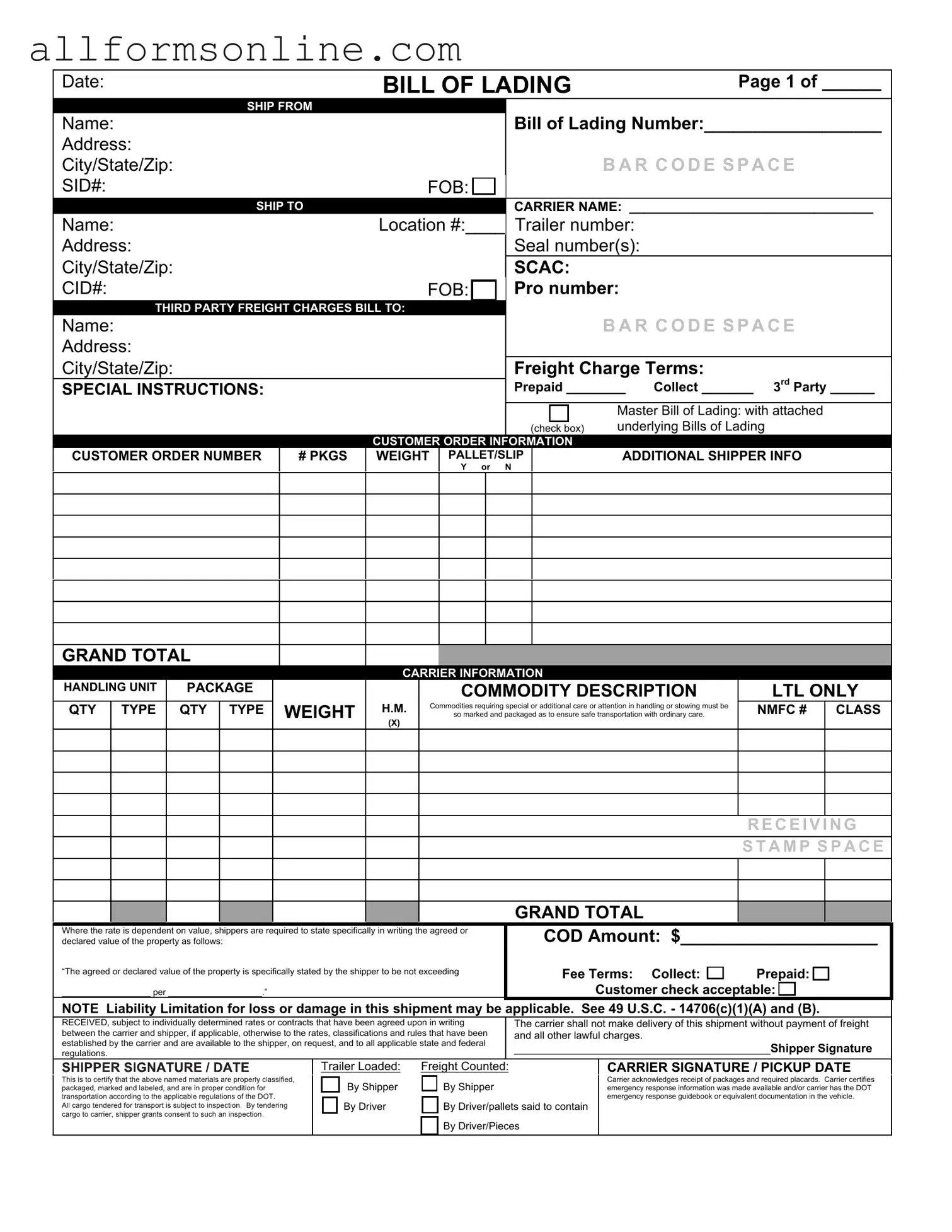What is a Bill of Lading?
A Bill of Lading is a legal document between a shipper and a carrier. It serves as a receipt for goods and outlines the terms under which the goods are being transported. This document is crucial for both parties, as it details the type, quantity, and destination of the goods being shipped. It also provides evidence of the contract of carriage and can be used in legal disputes if they arise.
What is the purpose of a Supplement form?
The Supplement form is used to add additional information or modify details that were not included in the original Bill of Lading. This could include changes in the shipping instructions, additional items being shipped, or amendments to the consignee's information. Using a Supplement ensures that all relevant details are captured and acknowledged by both the shipper and the carrier.
Who needs to complete the Bill of Lading with a Supplement form?
The shipper is typically responsible for completing the Bill of Lading, including any necessary Supplement forms. However, the carrier may also need to provide input, especially if there are changes to the shipping details. It's important for both parties to review the document to ensure accuracy and agreement on the terms of shipment.
What happens if there is an error on the Bill of Lading or Supplement form?
If an error is discovered on the Bill of Lading or Supplement form, it is essential to address it promptly. Corrections should be made by filling out a new Supplement form that clearly states the changes. Both parties should sign the revised documents to acknowledge the corrections. This helps prevent misunderstandings and potential legal issues during the shipping process.
Can a Bill of Lading be transferred to another party?
Yes, a Bill of Lading can be transferred to another party through a process known as endorsement. This allows the new party to take over the rights to the goods being shipped. However, this transfer must be done according to the rules specified in the Bill of Lading and may require the consent of the original shipper and carrier. Proper documentation is crucial to ensure a smooth transfer.
What should I do if my goods are damaged during shipping?
If goods are damaged during shipping, the first step is to document the damage thoroughly. Take photographs and keep records of any correspondence with the carrier. Then, review the Bill of Lading to understand the terms regarding claims for damage. Typically, a claim must be filed with the carrier within a certain timeframe. Following the procedures outlined in the Bill of Lading will help in seeking compensation for the damaged goods.
